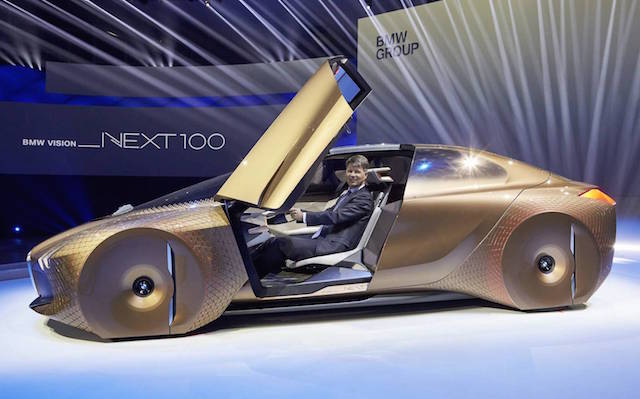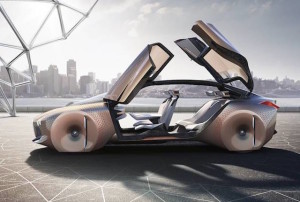
BMW has rolled out its ‘Vision Next 100’ concept, the first of four highlighting the carmaker’s vision of a future where cars will become “personal companions”.
It appeared this week at a special event in Munich, entitled the ‘Next 100 Years’, which marks the start of a year-long celebration of BMW’s centenary. The company opened for business on March 6, 1916.

The concept was penned by BMW design chief Adrian van Hooydonk. It is about the size of a 5-Series but with interior room of a 7-Series and was described as a “genuine BMW, offering an intense experience of ‘sheer driving pleasure’”. Its next public outing is at the Beijing motor show in April.
In June, BMW will reveal Mini and Rolls-Royce Vision concepts in London, while a BMW Motorrad Vision motorcycle concept will be unveiled in Los Angeles in October.
The Vision Next 100 concept is packed with technology –
• In self-driving mode, a ‘companion light’ in the centre of the dashboard glows white to let occupants know the car is in control. When it detects a pedestrian at a crossing, it glows green to let them know it’s safe to cross.
• The interior has purposefully been kept clean. There is a steering wheel but other controls and buttons are absent.
• Instead, the entire windscreen takes the form of a head-up display. In self-driving mode, it will show video feeds of conference calls and even images such as attachments to emails.
• The surface of the dashboard is made up of ‘waves’ of warning lights. Example: It will light up red if sensors detect a pedestrian or cyclist about to appear behind a parked van. Of course, the car will apply its brakes if needs be.
• Seats and door panels will blend into one to make it more flexible and comfortable in self-driving mode.
• The trademark BMW kidney grille contains sensors for the self-driving technology.
• Wheels are fully enclosed, but ‘flexible’ bodywork allows the front wheels to still turn.
• Windows are heavily tinted in the colour of the car for privacy, important in self-driving cars, says BMW.

Company chief executive Harald Krueger (pictured at top in the car) described future models as autonomous “digital chauffeurs and personal companions … In the future, people will want access to the right mobility solution for their needs in any given situation,” he said.
“As a vehicle producer, we need to develop a fuller understanding of mobility in all its facets and address the new points we discover. Connectivity is becoming increasingly mainstream. Our technologies will learn to learn from people.”

BMW said increased urbanisation will be one of the main drivers of change in personal mobility. Its consultant experts estimate that by 2050 more than 75 per cent of people in Europe and about 90 per cent of people in United States will live in cities.
Design chief van Hooydonk said the Vision Next 100 concept was created to demonstrate the various technologies that lay ahead for the company.
“Technology is going to make significant advances, opening up fantastic new possibilities that will allow us to offer the driver even more assistance for an even more intense driving experience,” he said.
“My personal view is that technology should be as intuitive as possible to operate and experience so that future interactions between human, machine and surroundings become seamless. The BMW Vision Next 100 shows how we intend to shape this future.”
